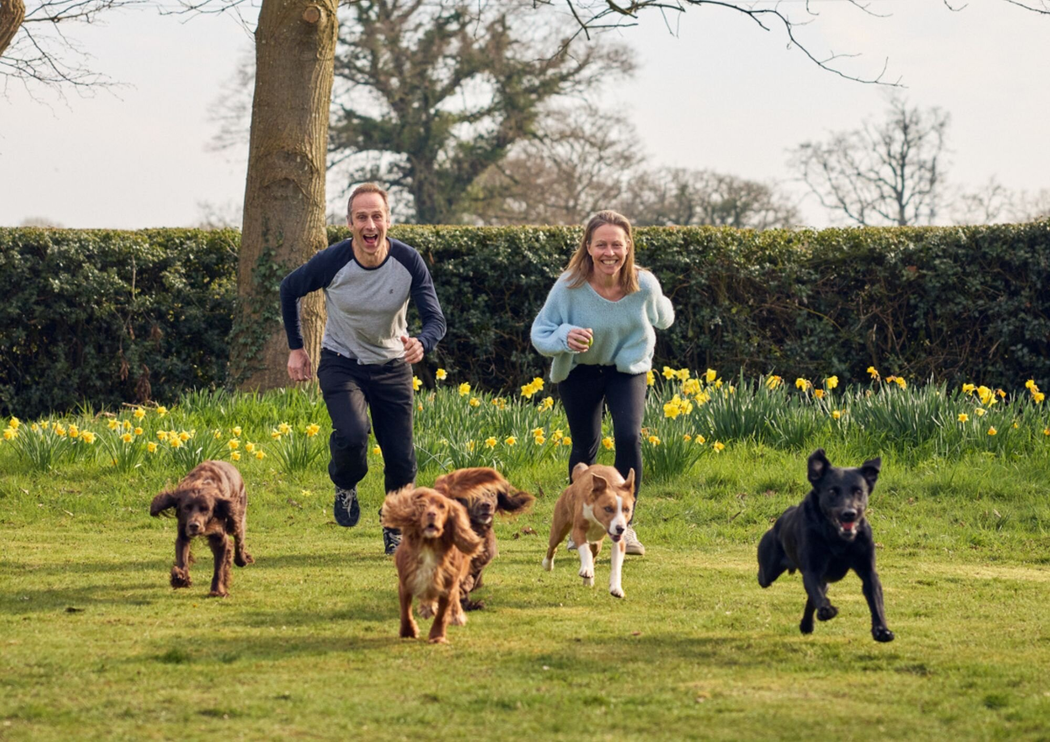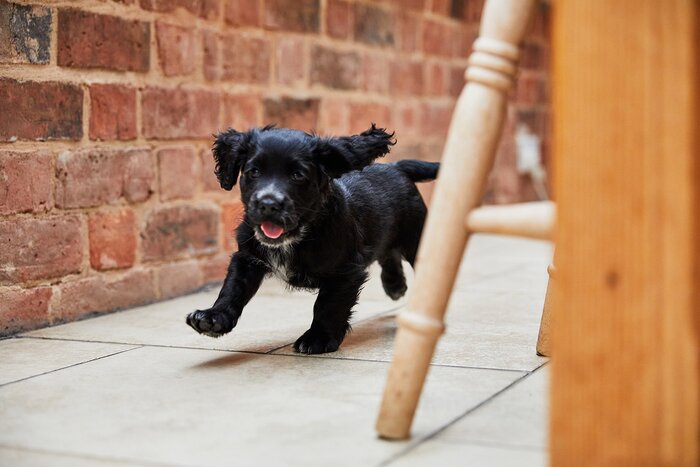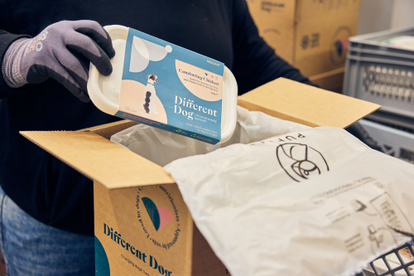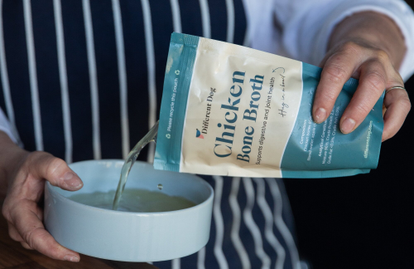

How much should we be exercising our dogs? From puppies to senior dogs and small to large breeds, our in-house vet, Alison, gives us her walking advice.
We did it! Although the weather seems tumultuous, there are certainly signs of Spring in the air, and with this comes longer walks and a desire to make the most of the sunshine. No adventure is complete without our four-legged friends, and regular exercise together can be a great way to bond, but it can often be difficult to know how much exercise is appropriate.
We’ve asked our in-house vet, Alison, to offer her advice on exercising your dog. Just like with their mealtimes, the amount of exercise needed will depend on your dog’s age, breed, and underlying health issues, so don’t hesitate to get in touch with our team if you’d like some tailored guidance
How much exercise does my Puppy need?
We’ll start with the babies, and if you’re lucky enough to have welcomed a puppy into your home we wanted to start by saying congratulations on your new family member; what an exciting time this is!
When it comes to exercise, it’s imperative not to over-exercise them, as their bones and joints need time to mature. For owners of breeds that are prone to Hip and Elbow Dysplasia, such as Labrador Retrievers, pay extra attention to exercise in your puppy.
So, what is the best exercise for a puppy, we hear you ask? Play!
Playing together at home is a great way to provide both mental and physical stimulation for your puppy. Once they’re fully vaccinated, this can be increased to a short walk, which will help build your puppy’s confidence in socialising with other humans and dogs. Alison suggests avoiding high-impact exercise, such as jumping from heights or making sharp turns when they’re still a puppy.

How much exercise does my senior dog need?
For our golden-oldies dogs, it’s important to keep regular, moderate exercise in their lives, to maintain muscle mass, joint strength, and a slim body condition as their metabolism slows. This is especially true for senior dogs suffering from arthritis. If your dog struggles with their joints, swimming can be an excellent choice of activity, as it is less stressful on the joints.
Some older dogs suffer from Canine Cognitive Dysfunction, which can leave them feeling disorientated, and having less awareness of their senses. For these dogs, it’s important to find ways to exercise that limit any potential anxiety, for example, taking them on short, familiar routes when out on a walk.
How much exercise do small and toy breed need?
We feed a lot of smaller breeds such as Cockapoos, Cavapoos, Dachshunds and Chihuahuas. Our Toy and small-breed dogs don’t need as much exercise as the larger, sporting breeds, but will still benefit hugely from regular daily exercise. Most breeds will thrive on a couple of shorter walks per day, and if they’re in good health, aim for each walk to be 20-30 minutes.

How much exercise does my medium to large dog need?
If your dog is a larger breed, or a working dog, such as a Springer Spaniel, Border Collie or Labrador Retriever, you’ll know that they tend to be energetic and need significant amounts of exercise daily. Alison recommends up to an hour and a half of vigorous exercise per day, if your dog is fit and able.
If these larger dogs don’t have the opportunity to blow off some steam and head out for exercise, they may show their frustration in the home with behaviours such as chewing, digging or barking. Mental stimulation such as training and other enrichment games can help to tire intelligent breeds such as Border Collies and Labrador Retrievers, so if you don’t already, think about introducing this into their regime.
How much should I be exercising my dog in hot weather?
Our in-house vet, Alison, recommends avoiding exercising at the hottest times of the day as we head into Spring and Summer, to minimise the risk of your dog developing heatstroke. Look after your pup’s pads by avoiding walking on pavements on hot days, as this can be damaging and always make sure you take fresh water with you to help cool your dog, as they’re unable to regulate their heat through sweating.

What dog food will fuel my dog for exercise?
Whilst it’s important to know the amount of exercise recommended for your dog, it’s also vital to have the measures in place to help your dog exercise safely, including making sure they’re properly fuelled. If you’re feeding Different Dog’s high-protein, freshly cooked meals, you’re already one step ahead!
Avoid feeding directly before going for an intense exercise session, and always consider your dog’s individual needs and allow plenty of rest breaks for the senior dogs and puppies, especially. You can learn more about our freshly cooked recipes here.
We hope you find Alison’s guide useful as we head into the warmer months. Remember that every dog is different, and our knowledgeable team are always on hand to offer tailored advice that suits your dog’s individual needs.
If you need any advice on feeding or exercising your dog, our team are available to help and can be contacted at feedme@differentdog.com.
You may also be interested in


